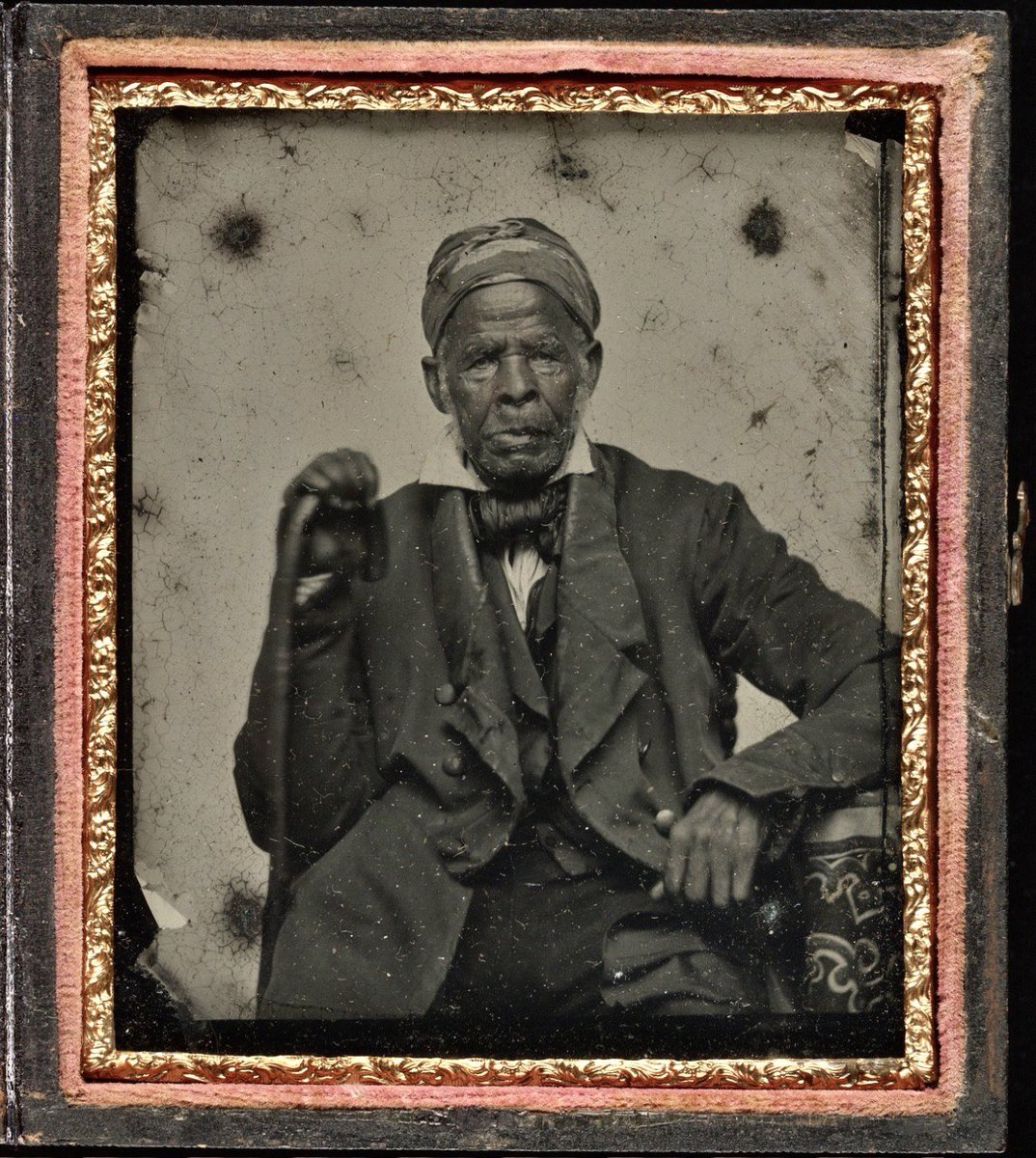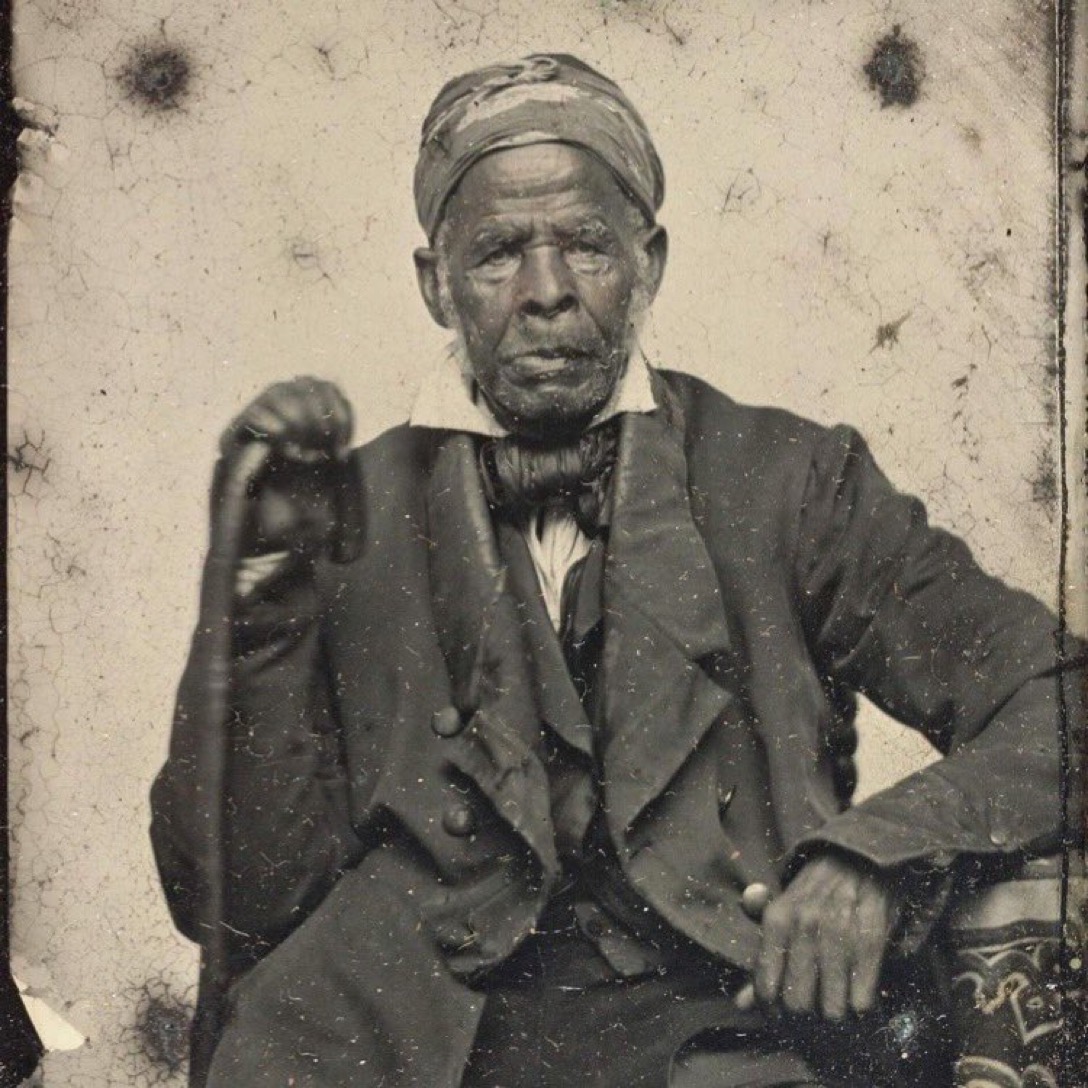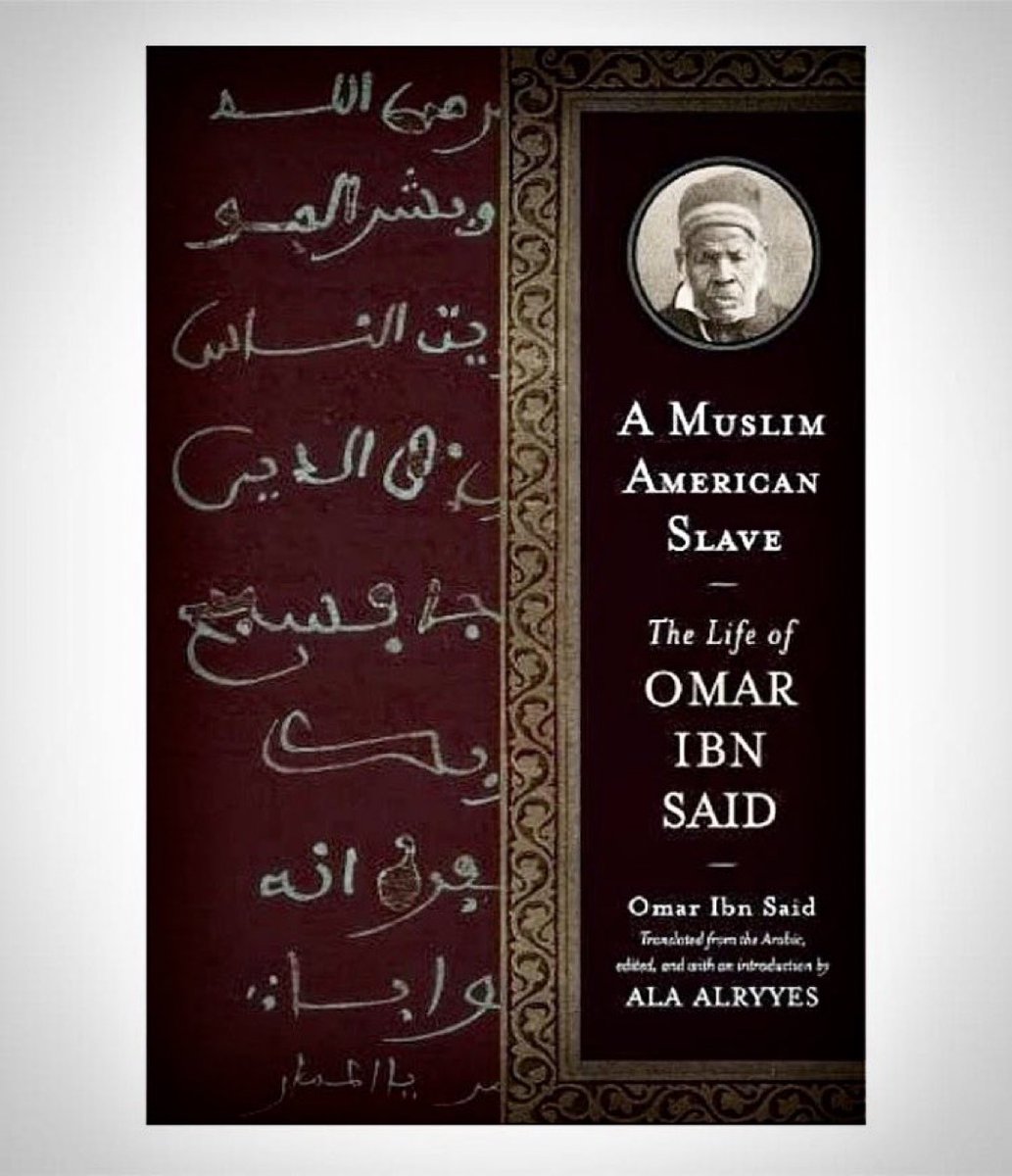In 1807, Omar ibn Said, a Muslim scholar, was stolen from Senegal & sold into slavery in America. He left behind an autobiography written in Arabic.
To mark the International Day for the Remembrance of the Slave Trade & its Abolition, a thread on the remarkable story of Omar...
To mark the International Day for the Remembrance of the Slave Trade & its Abolition, a thread on the remarkable story of Omar...

1/ Written in Arabic and recently acquired by the @librarycongress, "The Life of Omar Ibn Said” is not only a rare handwritten personal story of an American slave, but it's also one of the first intimate accounts of the early history of Muslims in the United States.
2/ Omar wrote his brief autobiography, 190 years ago, & it spent much of the last century forgotten in an old trunk in Virginia. When he wrote it, Omar was 61 and more than two decades into a long enslavement in America, first in Charleston and then North Carolina
Amazing work paying tribute to Omar ibn Said by artist
@RSaadiy
Amazing work paying tribute to Omar ibn Said by artist
@RSaadiy

3/ Omar ibn Said was born to a wealthy family in the Imamate of Futa Toro, located along the Middle Senegal River in West Africa. He was an Islamic scholar & a Fula who spent 25 years of his life studying with prominent Muslim scholars, learning mathematics, astronomy & business 

4/Omar was enslaved & taken to Charleston South Carolina. In his autobiography, the description of his capture by "a large army who killed many men" & his crossing of "the great sea" for a month & a half testifies to the violence of the slave trade & terrors of the middle passage 

5/ Omar was among the approximately one-third of American slaves who were Muslim. While the exact number of enslaved Muslims is unknown, up to 40 percent of those who were captured and enslaved came from predominantly Muslim parts of West Africa. 

6/ Experts estimate the slave vessel transporting Omar reached South Carolina's shores in 1807. The next year, the United States abolished the trans-Atlantic slave trade, & the importation of new enslaved individuals into the country. However, the illegal slave trade persisted 

7/ Not long after his arrival to Charleston, Omar was sold to a cruel local and intensely violent slaveholder, he escaped and made his way to Fayetteville, North Carolina 

8/ As a runaway, Omar sought a place of worship, & found a church & began praying. When discovered, authorities took Omar into custody. He became widely known for inscribing Arabic text on the walls of his prison cell, challenging the notion that enslaved Africans were illiterate 

9/ Omar was purchased by a notable figure in the region, General James Owen. Recognizing Omar's Islamic beliefs & proficiency in Arabic, Owen gave him an Arabic version of the Bible. Said attended the nearby Presbyterian Church & underwent Christian baptism in the year 1821. 

10/ Omar's later apparent conversion to Christianity elevated his status as something of a public figure. People remarked on his conversion and solid Christian devotion. However, inside his Bible, Omar wrote in Arabic, "Praise be to Allah, or God," &"All good is from Allah." 

11/ Omar exhibited a shrewdly discreet approach to practicing Islam in his writings. As an illustration, he wrote Surah Al-Fatiha, the initial chapter of the Qur'an, in Arabic, leading white observers to perceive it as the Lord's Prayer. 

12/ In another text, he wrote a part of a Psalm but then included a traditional Muslim invocation after it. It was his Islamic education that allowed Omar to use Arabic to hide his Muslim religious writings
Omar ibn Said portrait ca. 1850
from @YCAL_JWJ

Omar ibn Said portrait ca. 1850
from @YCAL_JWJ

13/ In 1836, Omar relocated alongside the Owen family to Wilmington, North Carolina, and later to a farm situated along the Cape Fear River amidst the Civil War. It is thought that he passed away at the age of 94, although the precise details of his deathremain unknown 

14/The interpretation of Omar's text starts with passages from the Holy Qur'an. His autobiography is not chronological but focuses on pivotal moments in his life: his forced voyage to America, his escape & recapture, his time in prison, & his journey to the residence of Jim Owen. 

15/ Omar's social standing and education in West Africa, coupled with his unwavering resilience against the brutality he endured in South Carolina, equipped him with abilities that allowed him to attract favorable notice from at least some white Americans. 

16/ The erasure of the black Muslim identity among the enslaved people in the United States was part of a strategy to strip enslaved Africans of their identities & reduce them to chattel both legally & in the public imagination
5 generations of a slave family. Shutterstock
5 generations of a slave family. Shutterstock

17/ Both accounts of Said & his autobiography tell of white American’s positive reaction to his literacy & spiritual devotion. While the reaction of white people was fortunate for him, literacy among enslaved people was not legal in certain states, including South Carolina 

18/ Enslaved Muslims who left behind a written record challenged the idea that enslaved men and women were a brute workforce solely capable of physical labor because they lacked the intellectual capacity that would make them deserving of independence and freedom.
19/ What we know about the masses of African Muslim slaves who left no written record can be garnered from the remembrances of their descendants and their names on bills of sale or runaway notices. How long they adhered to Islam is unknown 

20/ Some enslaved Muslim converted to Christianity while others pretended to convert in order to satisfy their captors. But there are signs that some enslaved Muslims held onto the religion of their homelands. Prayer on a Plantation by artist
@safialatif
@safialatif

@safialatif 21/ ‘You asked me to write my life…I have much forgotten my own, as well as the Arabic language. Neither can I write very grammatically or according to the true idiom & so, my brother, I beg you, in God’s name, not to blame me, for I am a man of weak eyes, & of a weak body’ Omar 

Discover more about the story of Omar ibn Said, with sources of references & information:
baytalfann.com/post/the-autob…
baytalfann.com/post/the-autob…
• • •
Missing some Tweet in this thread? You can try to
force a refresh

 Read on Twitter
Read on Twitter





















